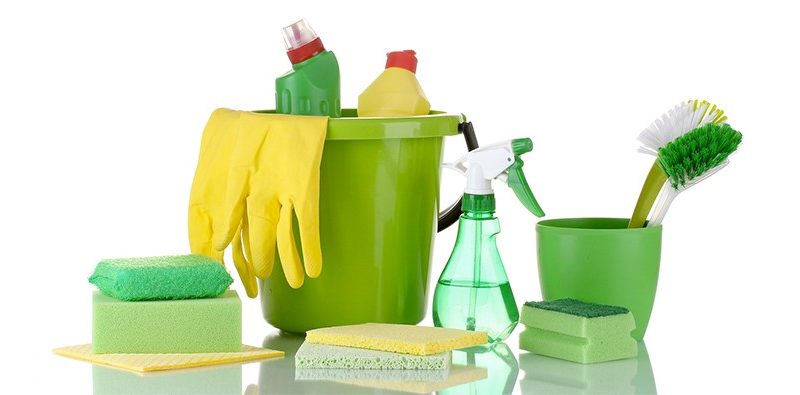The Best Eco-Friendly Cleaning Products
In today’s environmentally conscious world, eco-friendly cleaning products have become essential for maintaining a clean home while minimizing our impact on the planet. This article provides an in-depth look at some of the best eco-friendly cleaning products available, their benefits, and how they compare to traditional cleaning solutions.

-
Understanding Eco-Friendly Cleaning Products
Eco-friendly cleaning products are designed to clean effectively while reducing environmental impact. They typically feature biodegradable ingredients, avoid harsh chemicals, and come in sustainable packaging. These products are also often cruelty-free and made from renewable resources.
Key Features of Eco-Friendly Cleaning Products:
- Biodegradable Ingredients: Break down naturally without harming ecosystems.
- Non-Toxic: Safe for humans and pets, reducing indoor air pollution.
- Sustainable Packaging: Recyclable or compostable materials.
- Cruelty-Free: Not tested on animals.
-
Popular Eco-Friendly Cleaning Products
Here is a list of some highly regarded eco-friendly cleaning products currently on the market:
| Product | Type | Key Features | Price Range |
| Seventh Generation All-Purpose Cleaner | All-Purpose Cleaner | Biodegradable, plant-based ingredients | $3 – $6 |
| Mrs. Meyers Clean Day Multi-Surface Cleaner | Multi-Surface Cleaner | Essential oils, non-toxic | $4 – $7 |
| Ecover Zero Laundry Detergent | Laundry Detergent | Fragrance-free, made with renewable plant-based ingredients | $8 – $12 |
| Method Antibacterial Bathroom Cleaner | Bathroom Cleaner | Non-toxic, biodegradable, contains citric acid | $4 – $7 |
| Dr. Bronner’s Sal Suds | All-Purpose Cleaner | Plant-based, highly concentrated | $10 – $15 |
- Benefits of Using Eco-Friendly Cleaning Products
- Environmental Impact
Eco-friendly cleaning products reduce the release of harmful chemicals into the environment. Traditional cleaning products often contain volatile organic compounds (VOCs) that contribute to air pollution and respiratory issues. In contrast, eco-friendly products use biodegradable ingredients that break down naturally and minimize environmental harm.
- Health Benefits
These products are less likely to trigger allergies or respiratory issues due to their non-toxic nature. With fewer harsh chemicals, they offer a safer alternative for households with children and pets.
- Sustainable Practices
Many eco-friendly brands prioritize sustainable sourcing and production processes, ensuring their products have a lower carbon footprint. This includes using renewable energy, reducing waste, and opting for eco-friendly packaging.
-
Comparative Analysis: Eco-Friendly vs. Traditional Cleaning Products
The following table highlights the differences between eco-friendly and traditional cleaning products across various criteria:
| Criteria | Eco-Friendly Cleaning Products | Traditional Cleaning Products |
| Ingredients | Biodegradable, plant-based | Synthetic chemicals, often non-biodegradable |
| Health Impact | Non-toxic, safer for humans and pets | May cause respiratory issues, irritants |
| Environmental Impact | Minimal, sustainable practices | Can contribute to pollution and environmental damage |
| Effectiveness | Effective, though may vary by brand | Generally high, but effectiveness varies |
| Cost | Often higher due to sustainable practices | Usually less expensive |
| Packaging | Recyclable or compostable | Often not recyclable, contributes to plastic waste |
-
Case Study: The Efficacy of Eco-Friendly Cleaners
To assess the effectiveness of eco-friendly cleaners, a comparison was conducted using a set of common household stains: grease, grime, and soap scum. The products tested included Seventh Generation All-Purpose Cleaner, Mrs. Meyers Multi-Surface Cleaner, and Method Antibacterial Bathroom Cleaner.
| Cleaner | Grease Removal | Grime Removal | Soap Scum Removal |
| Seventh Generation | Good | Excellent | Fair |
| Mrs. Meyers | Fair | Good | Excellent |
| Method | Excellent | Good | Good |
Analysis:
- Seventh Generation All-Purpose Cleaner performed well in grime removal but was less effective against soap scum.
- Mrs. Meyers Multi-Surface Cleaner showed strong results across all stains, particularly in soap scum removal.
- Method Antibacterial Bathroom Cleaner excelled in grease removal and provided consistent results across other stains.
6. Future Trends in Eco-Friendly Cleaning Products
The eco-friendly cleaning product market is rapidly evolving, driven by increasing consumer demand for sustainable solutions and advancements in green chemistry. Future trends in this sector are expected to focus on several key areas:
- Innovations in Ingredients: Research is ongoing into new, more effective biodegradable ingredients that can provide even greater cleaning power without compromising environmental safety. Innovations may include enzymes and natural compounds that target specific types of stains and grime more effectively.
- Enhanced Packaging Solutions: As awareness of plastic pollution grows, there is a push towards more innovative and sustainable packaging solutions. Expect to see more products in refillable containers, and the development of packaging made from biodegradable materials or recycled plastics.
- Green Certifications and Standards: As the market grows, so does the need for clear and consistent certification standards. Organizations are working to create more stringent criteria for what qualifies as an “eco-friendly” product, helping consumers make more informed choices and encouraging manufacturers to adhere to higher environmental standards.
7. Tips for Transitioning to Eco-Friendly Cleaning Products
Making the switch to eco-friendly cleaning products can be a smooth process with the right approach. Here are some tips to help you transition effectively:
- Start Small: Begin by replacing your most frequently used products with eco-friendly alternatives. For example, you might start with an all-purpose cleaner or dish soap before moving on to more specialized products like bathroom cleaners or laundry detergents.
- Research and Compare: Take the time to research different brands and products. Look for certifications such as Green Seal, EcoLogo, or the USDA Organic label to ensure the products meet rigorous environmental and health standards.
- DIY Options: Consider making your own cleaning solutions using natural ingredients like baking soda, vinegar, and essential oils. Homemade cleaners can be cost-effective and customized to your cleaning needs, though they may require more experimentation to achieve desired results.
- Monitor and Adjust: After making the switch, monitor the performance of the new products and adjust as needed. Some eco-friendly products may require different techniques or more frequent applications to achieve the same results as their traditional counterparts.
8. The Role of Consumers in Promoting Eco-Friendly Cleaning
Consumers play a crucial role in promoting the use of eco-friendly cleaning products and driving positive change in the industry. By making informed choices and advocating for sustainability, individuals can contribute to a broader shift towards greener practices.
- Advocacy and Awareness: Spread the word about the benefits of eco-friendly cleaning products within your community. Educating friends, family, and colleagues can increase demand for sustainable products and encourage more manufacturers to prioritize environmental considerations.
- Supporting Green Businesses: Whenever possible, support companies that are committed to sustainability and ethical practices. Your purchasing power can help drive innovation and encourage more businesses to adopt eco-friendly practices.
- Feedback and Reviews: Share your experiences with eco-friendly cleaning products through reviews and feedback. Your insights can help other consumers make informed decisions and provide valuable information to manufacturers looking to improve their products.
- Demand Transparency: Advocate for transparency in product labeling and corporate practices. Requesting detailed information about ingredients, sourcing, and production methods can lead to higher industry standards and better consumer protection.
By taking these actions, consumers not only contribute to a healthier environment but also help create a market that values and prioritizes sustainability.
Conclusion
Choosing eco-friendly cleaning products is a step towards a healthier home and a more sustainable environment. While they may come with a higher price tag, the benefits they offer in terms of health and environmental impact often outweigh the cost. By understanding the options available and their respective strengths, consumers can make informed decisions that align with their values and needs.
Adopting eco-friendly cleaning solutions not only contributes to a cleaner home but also supports the global effort to reduce pollution and promote sustainability.










